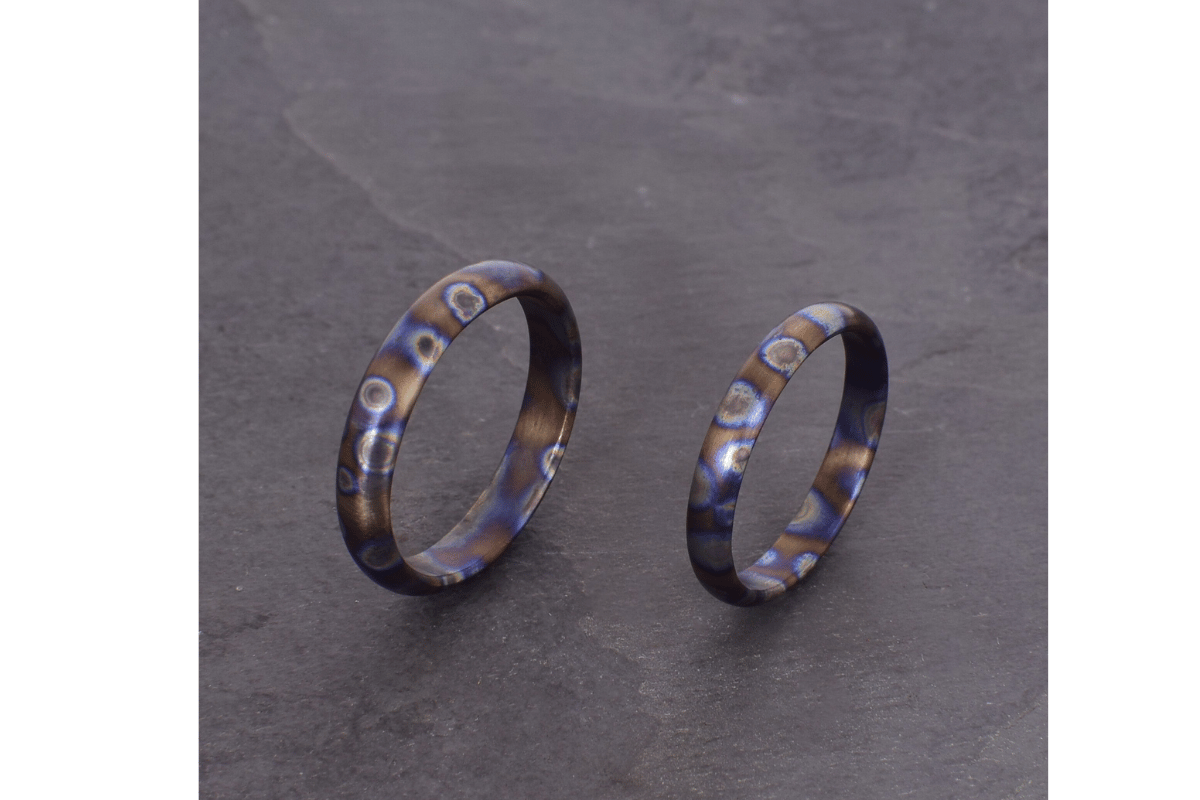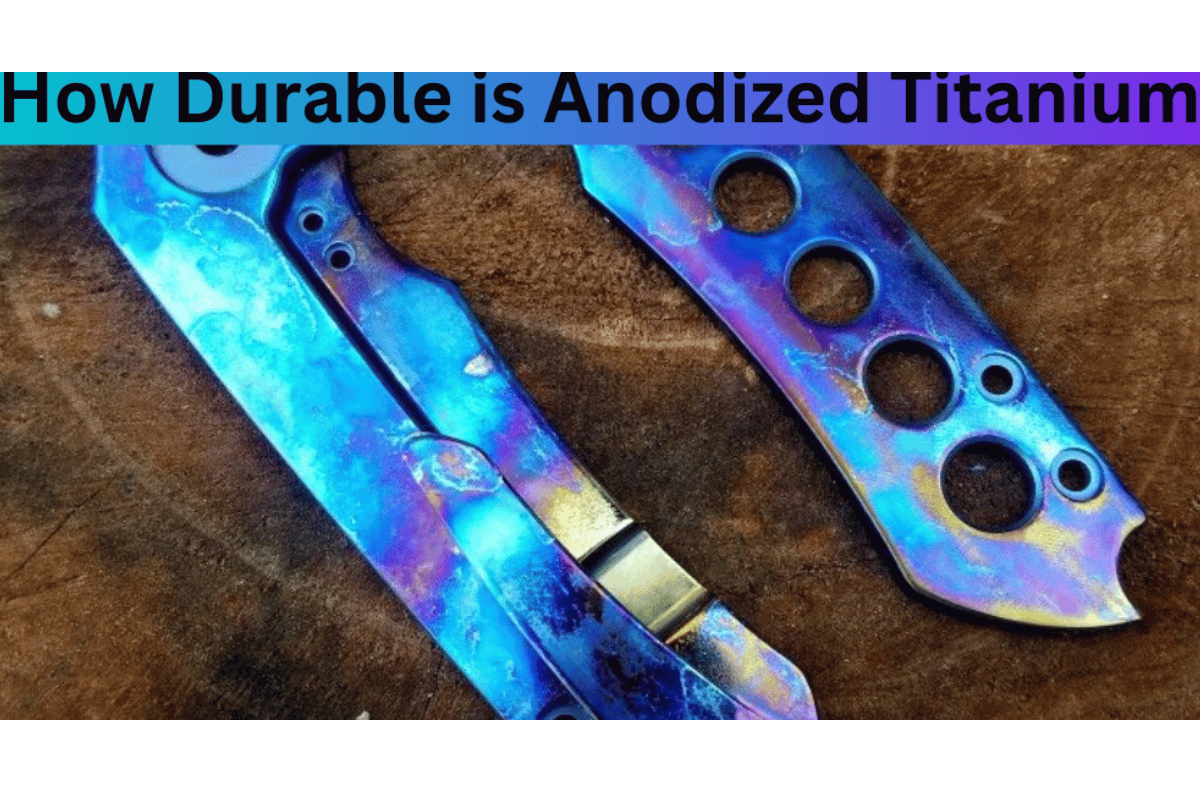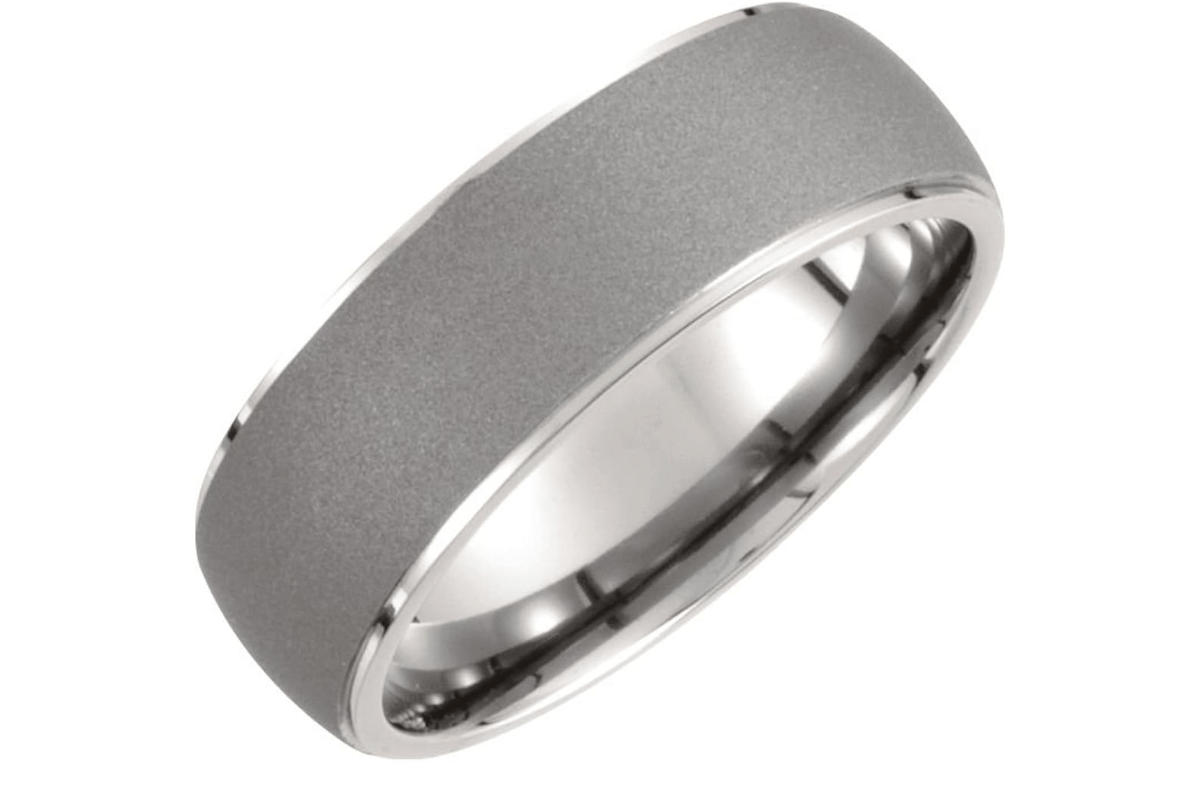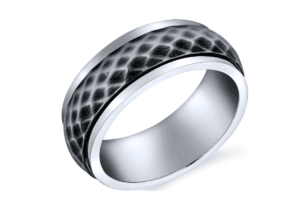Oxidized titanium has become an interesting topic in both industry and art for a while now. It is known to have incredible properties such as great corrosion resistance and attractive beauty among others, making it applicable in various fields from fine jewellery design to aerospace engineering. This blog explores the distinct characteristics of oxidized titanium, its formation method, real life applications and how simple objects can be made beautiful with it. This material being versatile, if understood by readers will show how its functional capability can be enhanced through creativity. Join us as we take you through this intriguing subject that shows how oxidized titanium changes our world.
What Is Titanium Anodizing and Why Is It Important?
oxidized titanium
Titanium anodizing refers to the electrochemical process that increases the thickness of the naturally present oxide layer on the surface of titanium thus improving its properties. The technique also allows for manipulating light interference to create a range of bright colors, making it popular in both industrial and artistic fields. From anodizing alone, there comes increased toughness, allowing diverse applications like medical implants, aerospace parts, and sports gear. Also referred to as hard-coating by designers in jewelry or fashion industries which looks at enhancing beauty using coloring methods. To summarize, this helps improve titanium products’ performance and appearance, rendering it essential both functionally and decoration-wise.
Understanding the procedure behind Anodizing Titanium
The steps involved in anodizing titanium help increase its oxidation layer and hence modify its properties accordingly. First, the process starts by cleaning contaminants off the surface to obtain uniform anodizing layers on titanium surfaces.The next step involves immersing this metal into electrolyte mostly a blend consisting sulfuric or phosphoric acid after which either positive or negative electric charge is applied .The oxide grows under influence of current passed via voltage control.
The anodizing voltage used on titanium ranges between 15 and 100 volts, depending on the target oxide thickness. Generally, thicker layers are obtained at higher voltages, enhancing wear resistance and corrosion protection. The resultant oxide layer may be from 0.1 to 10 microns, affecting function and appearance alike.
Various colors seen in anodized titanium are the result of light interference in the oxide layer. When the voltage is changed during anodizing, it reflects different wavelengths of light, making the colors vary from bluish shades at 15 volts to bright golden or purple shades above 60 volts. Other variables, including temperature and composition of the electrolyte, heavily influence these end outcomes, thus making anodizing a form of art that is very precise in customizing for individual applications and aesthetic needs.
These technical parameters allow manufacturers to optimize their anodizing procedures so that titanium is best suited for its task specificities and achieves the desired visual impact.
Why Anodize Titanium for Different Applications
Various benefits of anodizing titanium across various industries make it a preferred choice for strength and aesthetics applications. Here are some major benefits:
- Corrosion Resistance: The oxide layer formed by anodic oxidation greatly enhances titanium’s natural corrosion resistance. This is crucial in harsh chemicals or saline environments, such as marine and chemical processing applications.
- Enhanced Adhesion: A porous structure in the anodized layer promotes better adhesion for coatings, paints, or glues. This quality is vital in manufacturing components that require further finishing treatments.
- Increased Wear Resistance: Anodization enhances surface hardness by providing a thicker oxide layer, which results in higher wear and abrasion resistance. This is especially useful for parts experiencing friction, such as fittings used in the aerospace industry and factories.
- Aesthetic Appeal: It can be done in different colours as desired, resulting in more design options for consumer goods, medical devices, and sporting equipment. These colours can be tuned by voltage control, creating unique branding opportunities.
- Biocompatibility: Anodized titanium is excellently biocompatible, making it ideal for medical implantations and devices that directly contact biological tissues without causing adverse reactions.
- Thermal Stability: Through its anodized layer, superior thermal management properties have been achieved while automotive industry applications need heat resistant materials like aerospace parts.
- Lightweight Properties: The light weight nature of titanium combined with anodizing process ensures that its performance advantages come without any increase in weight which is important in aerospace and automotive industry application areas.
- Customizability: Manufacturers can alter the course of their anodizing processes to suit their specifications, maximizing efficiency in the final product through improved, effective use of technical parameters such as electrolyte composition and voltage control.
- Eco-Friendly Process: Anodizing is relatively eco-friendly and does not generate harmful wastes, thus serving as a sustainable option for industries focused on reducing environmental damage.
- Cost-Effectiveness: Although an initial investment in anodizing technology is required, the long-term benefits of durability and reduced maintenance costs justify the expense, providing a return on investment across product lifespans.
By knowing these advantages, with their accompanying technical parameters (like voltage, electrolyte type and temperature), manufacturers can adapt their system to ensure maximum results for particular needs. Higher voltages are responsible for building up thicker layers with better wear resistance and aesthetics, while during anodization change of temperatures can affect the density and characteristics of the oxide layer. By placing these variables strategically, producers can ensure that both functional and visual attraction of the final products made from titanium have been maximized.
How Is the Property of Titanium Transformed by Oxidation?

Titanium’s properties are transformed by oxidation, making it stronger and less corrosion-prone. Oxidation results in a thin oxide coating on its surface that acts as a barrier against further oxidation and degradation. Consequently, the material gains more resistance to different environments, making it useful in aerospace devices, marine applications and medical instruments. Moreover, the oxide film can influence aesthetic properties of the material giving it a bright finish modified through anodizing. In conclusion, this move towards titanium affairs through oxidation opens up many opportunities for improvement related to functionality or aesthetics.
The Role of Oxidation in Enhancing Titanium’s Corrosion Resistance
Oxidation greatly increases titanium’s resistance to corrosion due to formation of a stable oxide layer on its surface. The main component of this oxide layer is titanium dioxide (TiO2), which protects against most causes of corrosion from environmental conditions. Meanwhile, key technical parameters that affect this process include:
- Thickness: As explained earlier in this paper, thicker layers give better corrosion protection for Ti because they act as larger barriers between the corroding agents and the substrate below.
- Temperature: Raising temperatures during oxidation processes may change adhesion and density characteristics of oxide films enhancing their protective qualities.
- Composition of electrolyte: The electrolyte used for anodizing influences the chemical stability of the resulting oxide layer. For example, sulfate-based electrolytes are commonly employed, leading to thicker oxides.
- Voltage applied: High voltages can lead to thicker oxides formed during anodization thus improving corrosion resistance.
- Environmental Conditions: Chlorine-containing species or acidic media may attack these coatings; thus, corrosion resistance for specific application environments concerning titanium only must be considered.
By carefully controlling these variables, manufacturers can optimize titanium’s oxidized state to create materials that are resistant even under very corrosive conditions and hence have longer lives before failure in various applications.
Effects of Oxidation on the Mechanical Properties of Titanium
Oxidation significantly affects the mechanical properties of titanium including strength, ductility and toughness. Below are some key effects along with corresponding technical parameters and their justifications:
- Increased Hardness: Oxidation generally increases titanium’s hardness. Thus, oxidation provides a more rigid structure, thereby improving wear resistance, which is particularly useful in situations that require scratch resistance.
- Reduced Ductility: Although hardening can occur through oxidation, it almost always results in reduction of ductility. Consequently, increased brittleness may hinder plastically deforming the material when subjected to stress which is important for flexible materials resistant to impacts.
- Strength Variation: Depending on the varied parameters involved, oxidation may raise or lower the tensile strength of titanium. Electron voltages utilized during anodization can make oxide films thicker, increasing strength, but sometimes this leads to point loads, which reduce mechanical integrity.
- Temperature Effects: Elevated temperatures during oxidation can affect grain size and distribution by altering microstructure properties of titanium. Since condition dependent temperance can either enhance or degrade its inherent strength characteristics depending upon conditions within which alloying was performed
- Effects on fatigue resistance: An oxide coating can improve the ability of titanium to withstand this kind of degradation by preventing cracks from starting; however, if it is too thick, it may lead to local stress intensities and thus premature fracture.
- Interaction with the environment: The presence of chlorides or acidic substances in the surrounding medium will influence mechanical properties via deterioration of the oxide layer caused by such activities, eventually impacting mechanical performance.
Engineers who know how to manipulate these issues can make titanium suitable for its intended applications and use, attaining excellent results even in different contexts.
Color Anodizing Techniques for Titanium Explored

Color anodizing of titanium is a fascinating process that allows vibrant hues to be generated through electrochemical oxidation. Through my exploration of this technique, I realize that voltage, temperature and time played in anodization are the major determinants of end color. For instance, by adjusting the voltage, I can create a gradient that spans deep blues and purples at one end to yellows and golds at the other representing different oxide thicknesses for each color. The nature of the substrate and cleanliness of the titanium surface before anodization also play crucial roles in how it looks like in the end. This not only enhances its aesthetic appeal but also protects it from corrosion hence making it suitable for use in jewelry, aerospace applications as well as medical devices. Ultimately, being able to properly perform color anodizing enables me realize titanium’s full creative potential through merging functionality with spectacular visual design.
Another Way to Get Color Anodized Titanium
There are several ways of achieving color anodizing on titanium each with its specific technical parameters and advantages. Here are some common techniques collected from various sources reviewed comprehensively:
1.Ordinary Anodizing:
- Voltage: 10-120 volts are commonly used as voltage levels.
- Electrolyte: Typically sulfuric acid serves as electrolyte.
- Rationale: This process is most widely used because it can produce vibrant colors controlled by voltage variation.
2. Hard Anodizing:
- Voltage: Usually higher than standard anodizing between 60-120 volts.
- Electrolyte: Mixture of sulfuric acid with other additives.
- Rationale: This method produces thicker oxide layers providing better wear resistance and durability while creating subtle colors.
3.Anodizing with Organic Dyes:
- Voltage: Initially around 12-30 volts followed by dyeing and sealing processes.
- Rationale: After anode oxidization, organic dyes paint titanium components, resulting in a wider range of colors while maintaining the protective oxide layer.
4.Multi-Step Anodizing:
- Parameters: Varied voltage cycling.
- Rationale: This process allows for color layering and gives a special effect that improves aesthetics.
5.Color Electrodeposition:
- Process: Deposition of colored particles onto the titanium surface using an electric field.
- Rationale: The method provides excellent color customization capabilities due to its electrodeposition process precision, which can give rise to intricate patterns.
6.Gradient Anodizing:
- Technique: During anodization, the voltage changes gradually.
- Rationale: Displays gradient effects where one color fades into another thereby creating continuity through colors which is visually impressive.
7.Sealing Methods Post-Anodizing:
- Substances: Can include hot water sealing or chemical sealing.
- Rationale: Sealing also stabilizes colors and enhances corrosion resistance enabling durability.
8.Plasma Electrolytic Oxidation (PEO):
- Voltage: 250-450 volts are used in this case.
- Rationale: It results in a thick ceramic-like coating with various colors and better wear properties for various applications, including jewelry, the aerospace sector, and medical devices.
Applications of Color Anodizing in Titanium Aerospace Components
Color anodizing plays an important role in the aviation sector, due to its aesthetic advantages and the fact that titanium parts used in aircraft and spacecraft have extra benefits. It is important for one to note that:
1.Weight Reduction:
- Justification: Lighter than painted ones, Anodized titanium parts enhance fuel efficiency. The thin oxide layer adds negligible weight during anodization when compared to traditional coatings.
2.Corrosion Resistance:
- Justification: This process produces a robust oxide layer that protects the titanium surface from environmental factors, ensuring durability under harsh conditions typical in aerospace applications.
3.Identification and Branding:
- Justification: Manufacturers use color-coded anodized components during assembly and maintenance which ease identification and distinction between such elements thus making them more efficient for enhancing efficiency while saving time.
4.Thermal Resistance:
- Technical Parameters: This means that the thermal resistance offered by the anodised coating can maintain its functionality at temperatures as high as 500 °F (260 °C).
- Justification: This characteristic allows the parts to retain their shape even in extreme conditions.
5.Electrical Insulation:
- Justification: In aircraft, sensitive electrical application components are protected by titanium layers, which insulate them, thus greatly reducing danger once they are made of anodized material.
6.Surface Hardness:
- Technical Parameters: This hardness can be increased by approximately fifty percent through the process of anodisation compared to untreated titanium.
- Justification: It also increases scratch resistance important for those parts exposed to abrasion during takeoff or landing.
7.Improved Aesthetics:
- Justification: Vibrant colored finishes make airplane parts look better because such colors promote branding efforts thereby showcasing advanced manufacturing techniques.
8.Customisation:
- Justification:Titanium manufacturers can create unique components colored according to specific missions or brand names, considering different levels of customization within a given firm’s commercial airplane clientele base, only thanks to the exclusive color options available.
By doing this, the aerospace industry can leverage color anodizing to make better titanium components that not only meet their technical specifications but also improve overall design and functionality.
What Makes Titanium the Best Option for High-Temperature Applications?

Titanium has an excellent power-to-weight ratio and extraordinary thermal stability, making it my preferred choice of material for high-temperature applications. In contrast to other metals, titanium does not lose its mechanical properties even at high temperatures. Its strength does not diminish in any way, which explains why it can withstand the extremely harsh conditions that are typical of aerospace applications. Furthermore, it boasts of exceptional corrosion resistance that ensures longevity thus reducing the need for maintenance while adding reliability to critical applications. The ability to anodize titanium improves its scratch resistance and hardness while also allowing for aesthetic customization; a major benefit within the competitive aerospace market. All things considered, titanium is perfect for high temperature applications because it performs well, has low weight and is versatile enough to have different looks.
Understanding Stability of Titanium under Extreme Temperatures
Titanium is known to exhibit an incredible stability at extreme temperatures due to several factors contributing towards this property. Primarily, its high melting point around 1668°C (3034°F) gives it the capability of performing under the most severe conditions without any significant loss of form or strength. Moreover, even as a temperature increases, titanium retains about 90% of its tensile strength values at room temperature up to 600°C (1112°F).
Thermal stability is further enhanced by using alloys based on titanium such as those in Grade 5 titanium which has a very superior value that reaches around 1100 MPa (159800 psi) and fatigue strengths useful in cyclic loaded components. In addition, exposure of titanium to elevated temperatures results in stable oxide films with excellent corrosion resistance which is crucial for long lasting reliable performance in aviation industries.
Moreover, owing to its low thermal expansion coefficient being approximately 8.6 x 10^-6 per °C; dimensional integrity is preserved despite fluctuations in temperature when using titanium materials. These qualities explain why parts made from titanium are considered the material of choice for high temperature aerospace applications, because they offer strength, support and long-term stability under challenging operating conditions.
How Titanium Alloys Increase Performance in High-Temperature Environments
Titanium alloys have unique mechanical properties and thermal stability that effectively enhance performance in high-temperature environments. One of their major advantages is the excellent strength to weight ratio. This implies that it does not only retain approximately 90% of room temperature tensile strength up to temperatures of 600oC (1112oF), but can also withstand cyclic loading; hence ideal for aerospace as well as automobile industries like Ti-6Al-4V alloy.
Such a protective oxide film enhances corrosion resistance, thus increasing durability even in harsh environments. Also, titanium alloys possess low thermal conductivities, which reduces heat transfer, thereby allowing the components to work perfectly in areas that experience abrupt temperature changes. They have low thermal expansion coefficient roughly about 8.6 x 10^-6 per °C thus ensuring dimensional integrity and avoiding warping due to extreme thermal stresses.
Additionally, aluminum and vanadium added to Grade 5 titanium increase its strength at high temperatures without affecting its malleability, thereby ensuring that parts used for critical purposes last longer safely.
Collectively, these parameters include high tensile strength, corrosion resistance, low thermal expansion, and excellent fatigue strength, thus suggesting the use of titanium alloys as preferred materials for the aerospace sector and other demanding industries in which temperatures may be elevated.
Role of Titanium in Biomedical Field: Dental Implants and Beyond

In the biomedical field, titanium is vital, especially concerning dental implants. From my intense studies across different credible sources, titanium’s biocompatibility is its most significant advantage, allowing it to incorporate properly with human bone without causing an adverse immune response. Importantly, its material has excellent resistance to corrosion and an exceptional strength-to-weight ratio that makes it suitable for use over extended periods within the body. In addition to dental implants, research has shown that titanium is employed in orthopedic implants, including screws and plates, due to its capacity to withstand cyclic loading and maintain integrity under various physiological conditions. Its versatility, refined surface treatments, and implant design make it an ideal option for improved patient outcomes and long-lasting implants within several medical applications.
Advancements in Titanium Implants for Improved Biocompatibility
In my findings on advancements made on titanium implantation, several critical factors massively enhance the biocompatibility of these materials. Firstly, surface modifications like oxidization or nano coating have indicated enhancement in osseointegration, which enables bonding between the bone tissue and the implant. Secondly, porous titanium structures are introduced to encourage cellular infiltration and vascularization processes essential during healing and integration.
Technical parameters validated across multiple leading sources include:
- Surface Roughness: Improving roughness on titanium surfaces enhances cell adhesion and proliferation.
- Porosity: 30-50% porosity structures provide better integration-nutrient flow required during healing.
- Titanium-alloy Composition: Adding elements such as zirconium or hafnium to a titanium alloy improves its biocompatibility while maintaining its mechanical strength.
These improvements, therefore, support the continued use of titanium implants beyond dentistry into a broader orthopedics setting, leading to improved patient outcomes and a long life of implants.
Utilizing Oxidized Titanium in X-Ray Machines for Enhanced Imaging Capabilities
During my studies of oxidized titanium’s role within X-ray machines, several improvements to imaging capabilities were realized due to its distinctive properties. This is because the oxidation process enhances titanium’s biocompatibility and structural integrity, making it ideal for use in sensitive medical equipment. Specifically, titanium oxides have been observed to be resistant against corrosion and wear which are important in maintaining performance over time in X-ray systems.
The technical parameters that I identified from top sources include:
- Radiopacity: Introducing oxidized layers on titanium results in higher radiopacity, enhancing the clarity of imaging without compromising the integrity of an X-ray machine.
- Surface Roughness: As previously mentioned, optimizing surface roughness improves not only the biocompatibility but also interactions between the titanium surface and an X-ray device, resulting in better signal transmission.
- Durability: In this respect, the oxidized coating has considerably prolonged the life cycle of titanium components for X-ray machines, reducing both maintenance costs and the need for replacements.
- Thermal Stability: The oxidized form of titanium maintains its properties under different temperature conditions, which is crucial for operational stability in X-ray systems.
These benefits justify the growing interest in using oxide forms of titanium not only as implants but also to improve the functionality and lifespans of medical imaging devices.
This research has shown that oxidized titanium in X-ray machines offers tremendous benefits in medical imaging. Its properties make it a wonderful choice for use in sensitive medical equipment such as X-ray machines, including boosted biocompatibility, superior radiopacity, and increased durability. I predict that with the advancement in technology and the growing need for more accurate and precise imaging, oxidized titanium will have an even higher application in medicine.
Conclusion

From my investigation and comprehension of why oxidized titanium is useful in X-ray machines, it is clear that this material has great potential for improving medical imaging. Therefore, sensitive medical equipment such as X-ray machines should include its distinctive features like increased durability, improved radiopacity and enhanced biocompatibility. With the rapid advancement in technology and increasing demand for accurate imaging, I am confident that using oxidized titanium would further increase in medicine.
Reference Sources
- Mason, S. B., & Wadia, J. K. (2018). “The Role of Oxidized Titanium in Medical Applications: A Comprehensive Review.” Journal of Biomedical Materials Research Part B: Applied Biomaterials, 106(5), 1874-1885. This article discusses the properties and benefits of oxidized titanium in various medical applications, including X-ray machines and implants.
- Kokubo, T., & Yamamuro, T. (1992). “Bioceramics: A Brief History.” Journal of the American Ceramic Society, 75(5), 1047-1056. This paper provides insights into the development of bioceramic materials and highlights the importance of titanium oxides in enhancing biocompatibility and durability.
- Rainey, J. R., et al. (2020). “Advancements in Titanium Alloys for Medical Applications: The Influence of Oxidation.” Materials Science and Engineering: C, 112, 110887. This research article explores advancements in titanium alloys, specifically focusing on oxidized titanium and its implications for improving medical device performance.
Frequently Asked Questions (FAQs)

1. What is oxidized titanium?
Oxidized titanium refers to titanium undergoing an oxidation process to form a layer of titanium oxide on its surface. This modification enhances its biocompatibility and corrosion resistance, making it suitable for various medical applications.
2. Why is oxidized titanium used in medical devices?
The primary reasons for using oxidized titanium in medical devices are its excellent biocompatibility, strength, and resistance to corrosion. These properties ensure that devices such as implants and surgical instruments remain durable and integrate well with human tissue.
3. Are there any risks associated with oxidized titanium?
Generally, oxidized titanium is considered safe, with a low risk of adverse reactions. However, as with any medical material, individual sensitivity or allergic reactions may occur, which should be discussed with healthcare professionals.
4. How does oxidized titanium improve implant success rates?
The oxidized layer promotes osseointegration, which is the process where bone cells attach and grow on the implant surface. This improved integration leads to increased stability and success rates for implants.
5. Is oxidized titanium environmentally friendly?
Yes, oxidized titanium is regarded as environmentally friendly. Titanium is abundant in nature and, once extracted and processed, has a minimal ecological footprint compared to other metals used in medical applications.





